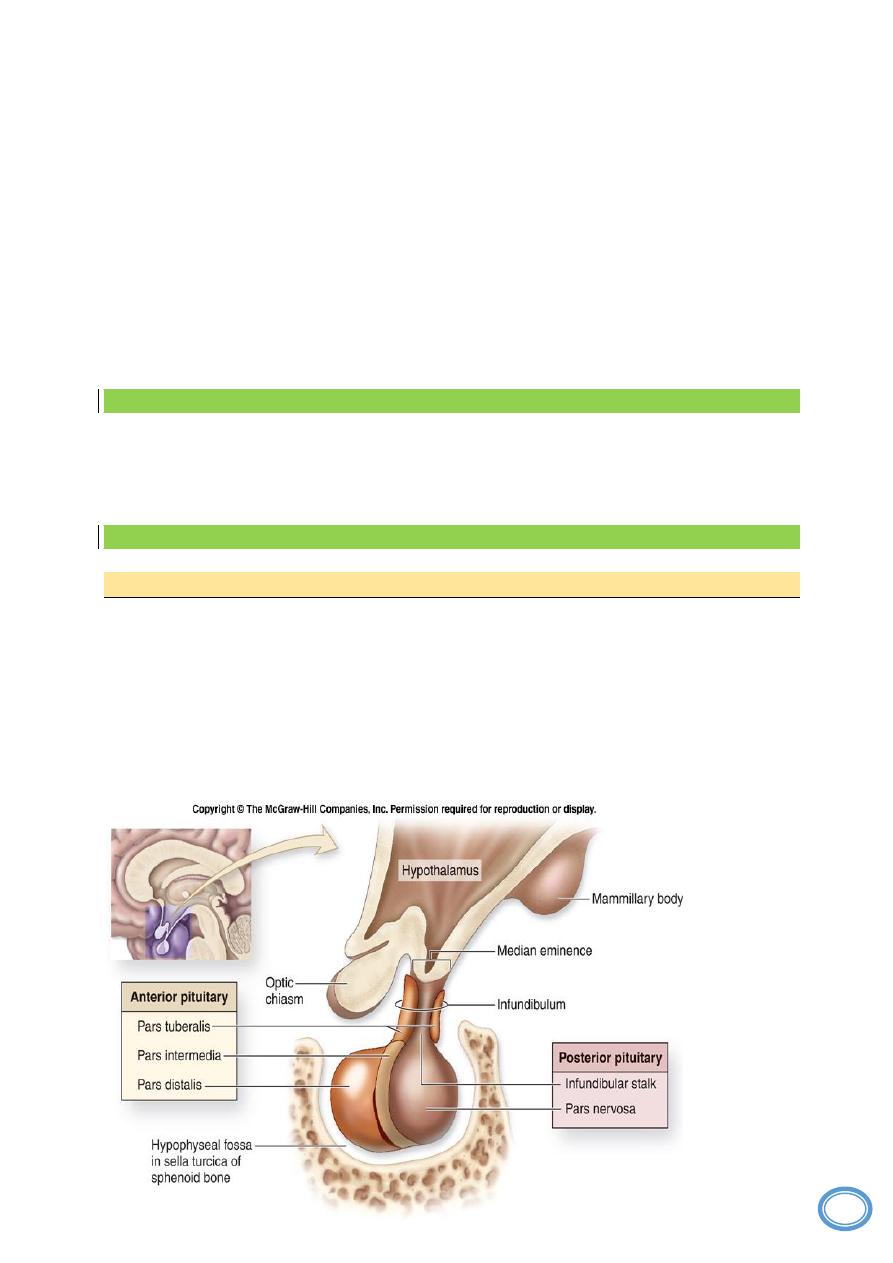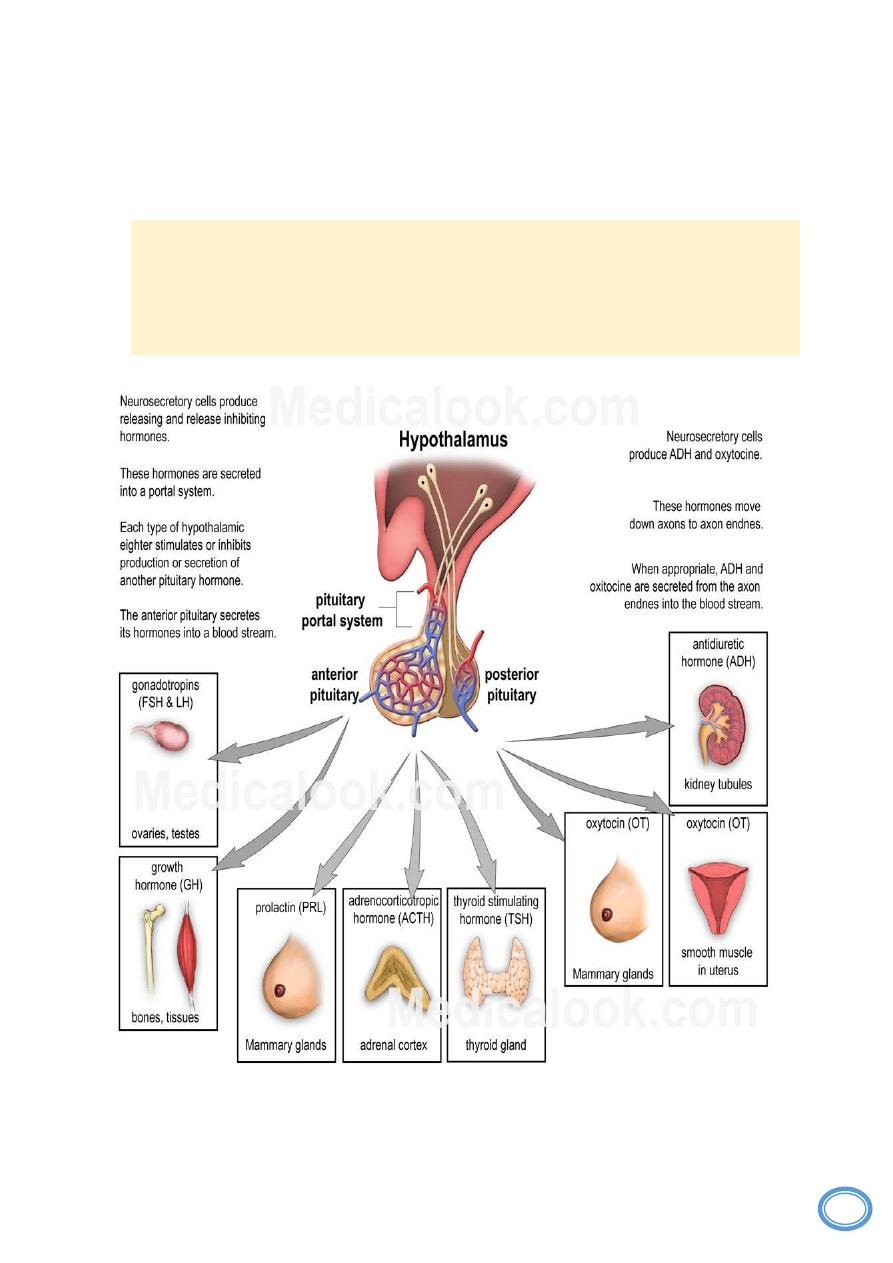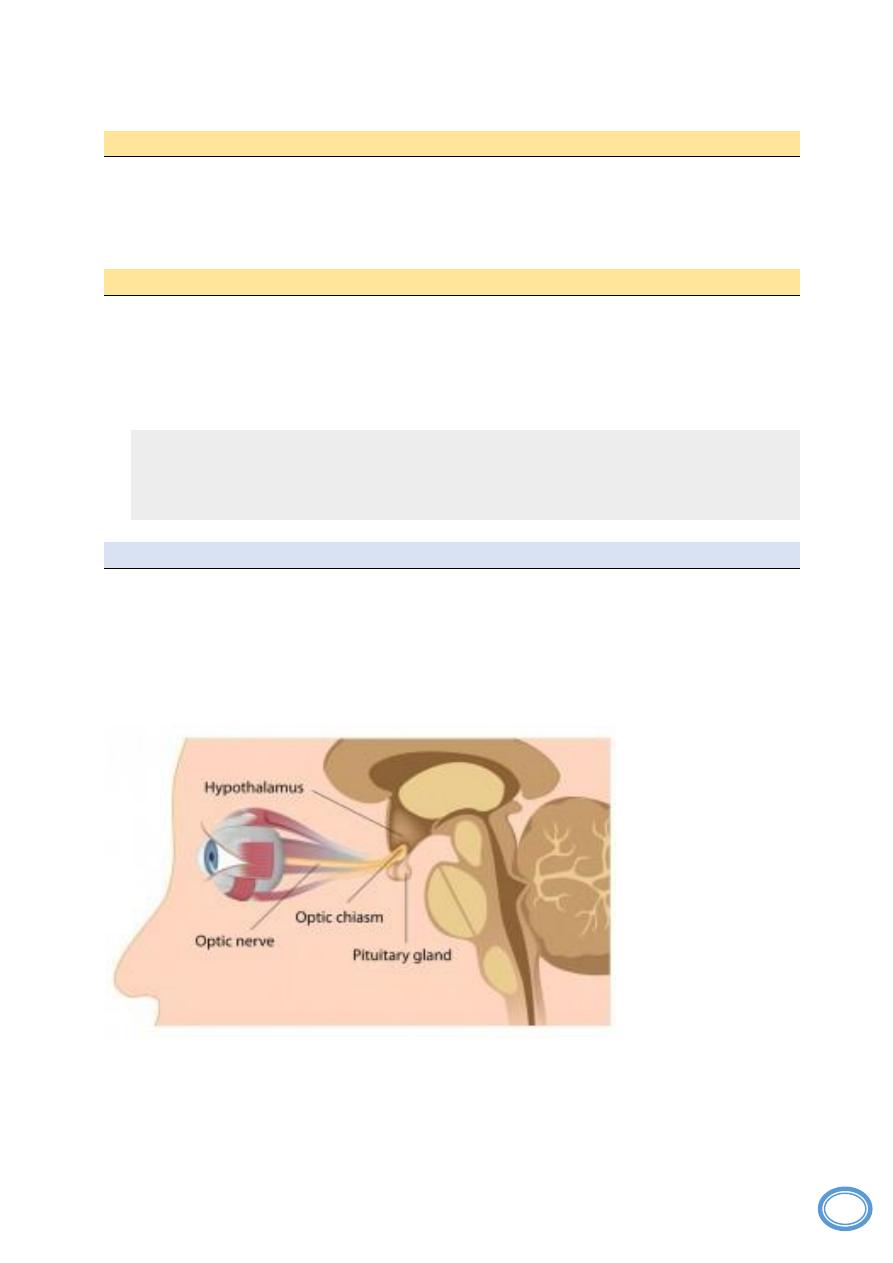
1
Endocrine system
L1
This system consist of a highly integrated and widely distributed group of organs whose
function is to maintain a state of metabolic equilibrium or hemostasis by secretion of
hormones. In cases of increased activity of the target tissue, in turn, typically down
regulate the activity of the glands secreting the stimulating hormones a process knwon
as (feed back inhibition).
Endocrine diseases can be broadly classified as:-
1-
Diseases of under or over production of hormones and their resultant
biochemical and clinical consequences.
2-
Diseases associated with the development of mass lesions (neoplasms) which's
either benign one (adenoma) or malignant one (carcinoma).
The most common and important endocrine glands or organs:-
1- Pituitary gland:
Pituitary gland is a small bean-shaped structure that lies at the base of the brain within
the confines of the sella-turcica, the gland is related to the hypothalamus, it's divided
into:
A- Anterior lobe or called (adenohypophesis)
connect with the hypothalamus by rich
venous plexus.
B- Posterior lobe or called (neurohypophesis)
connect with hypothalamus by
neuronal axons.

2
These 2 lobes are different in morphology and function.
The hormones secreted from anterior pituitary gland (which's consist of epithelial cells
called according to the stain taken by these cells in routine H & E stain: basophilic,
eosinophilic and chromophobes).
1- Prolactin hormone act on breast for secretion of milk during lactaion.
2- Growth hormone (GH).
3- ACTH act on adrenal glands to secret steroids.
4- Gonadotrophic hormones act on ovaries and testes to produce sex
hormones.
5- TSH act on thyroid gland to produce T3 & T4.

3
Posterior-pituitary gland:
It produces:
1- Antidiuretic hormone (ADH).
2- Oxytocine.
Anterior-pituitary gland:
The most important diseases that occur in anterior lobe of pituitary gland are:
I-Hyperpituitarism: causes:-
The most common cause of hyperpituitarism are:
1- Functioning adenoma (most common cause).
2- Hyperplasia.
3- Secretion of hormones by non-pituitary tumor.
4- Certain hypothalamic disorders.
Pituitary adenoma:
Which's the most common cause of overproduction of ant. pituitary hormones presented
clinically as overproduction of one or more ant. pituitary gland hormones or by local
mass effect as headache, visual field abnormalities because of close proximity of optic
nerve and chiasma to the sella.
radiologically
sellar expansion .
The signs and symptoms caused by overproduction of hormones depend on type of cells
proliferated and hormones secretion. e.g.
1. if cells of adenoma is type of prolactin hormonal secretion so patient present with
hyperprolactinemia which's obvious in premenapausal women who are present by
amenorrhea, galactorrhea and infertility.

4
2.In cases of GH secreting adenoma, this adenoma if occur in prepubertal children this
will cause gigantism, but if it occur after closure of epiphysis so cause acromegaly
which's occur in soft tissue, skin, viscera bones of face hands and feets.
3.ACTH secreting adenoma cause over secretion of ACTH which's act on adrenal
cortex causing hypercortisolism (Cushing's disease).
4. TSH secreting adenoma causing thyrotoxicosis.
2- Hypopituitarism:
This condition caused by
A- Primary pituitary disease as in cases of :
1. non functioning pituitary adenoma.
2. Ischemic necrosis of pituitary gland as in case of Sheehan's syndrome or called
postpartum necrosis of anterior pituitary because of bleeding during delivery.
3. Ablation of the pituitary by surgery or radiation.
B- less commonly may be decrease stimulating factors of hypothalamus.
The signs and symptoms of underproduction of anterior pituitary appear as loss of
hormones stimulating by pituitary hormones as thyroid hormones, adrenal corisol and
gonads.

5
Posterior pituitary gland
The 2 hormones secreted by this part of pituitary gland are:
1- Oxytocin:
stimulates the contraction of smooth muscles in gravid uterus so
overproduction of this hormone not associated with significant clinical abnormalties.
2- ADH
is more important and significant this hormone act on collecting tubules of
kidney to promote reabsorption of free water so decrease of ADH by head injury,
neoplasm of both hypothalamus or posterior pituitary cause diabetes insipdus a
condition characterized by polyuria, the urin having low gravity, while increased of
ADH secretion from pituitary or extracranial disorder as in cases of small cell
carcinoma of lung will cause decrease of urination by increased absorption of water to
circulation so cause hyponatremia and cerebral oedma.
